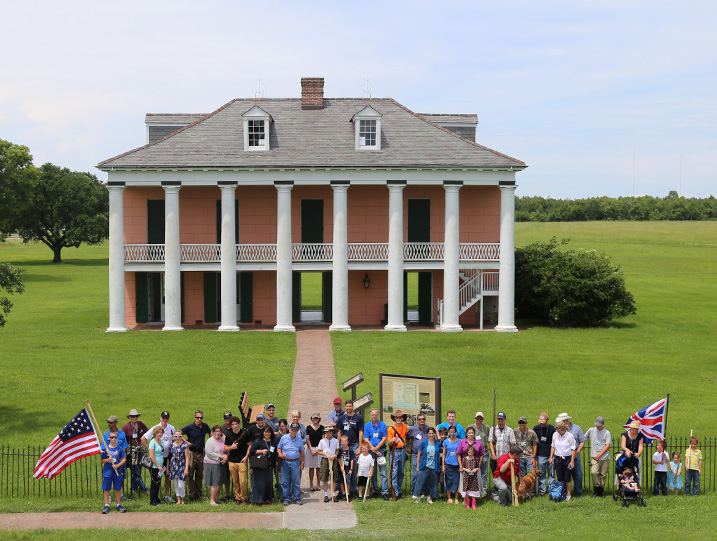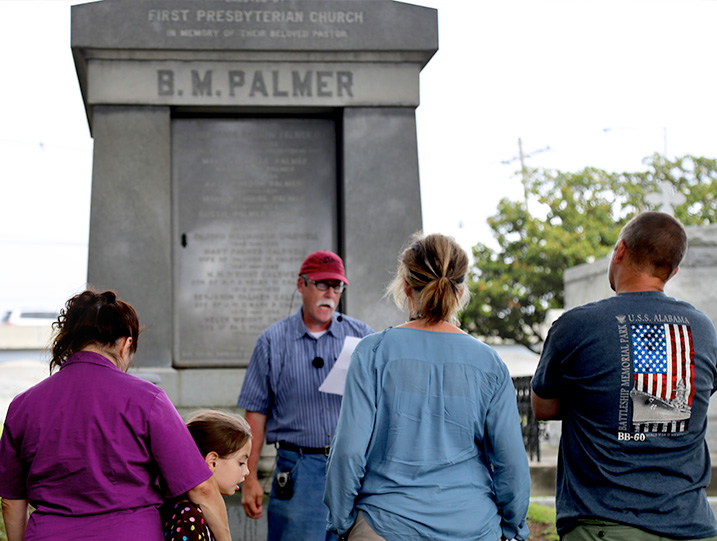“This trip was the tremendous culmination of a year-long study of WWII for my 14-year-old son. Stories need to be forever told lest we forget what was done for us, and at what price... We are still reeling from the overall experience. We especially enjoyed listening to and having the opportunity to interact with the veterans. The banquet was the icing on the cake.”
—Jeff R., D-Day and Great Battles Tour
The Decisive Weapons of WWII
 famous military truism says that generals always fight the previous war. Although that does occur, weapons technologies have often, especially in modern times, advanced in significant ways since the previous conflict. In World War II, Japan and the United States both thought that their battleships would prove the decisive weapons in fleet-to-fleet combat, as had occurred in the Russo-Japanese War and the First World War. American battleships did play a key role in the war in the Pacific, but primarily as a powerful bodyguard to the decisive weapon, the aircraft carrier. For the U. S., they also served to pulverize Japanese island positions with broadsides, to enable the Army and Marines to wade ashore for decisive infantry battle. We began our tour aboard one of the mightiest battleships of WWII, the USS Alabama. famous military truism says that generals always fight the previous war. Although that does occur, weapons technologies have often, especially in modern times, advanced in significant ways since the previous conflict. In World War II, Japan and the United States both thought that their battleships would prove the decisive weapons in fleet-to-fleet combat, as had occurred in the Russo-Japanese War and the First World War. American battleships did play a key role in the war in the Pacific, but primarily as a powerful bodyguard to the decisive weapon, the aircraft carrier. For the U. S., they also served to pulverize Japanese island positions with broadsides, to enable the Army and Marines to wade ashore for decisive infantry battle. We began our tour aboard one of the mightiest battleships of WWII, the USS Alabama.

Historian Bill Potter tells the story of the USS Alabama
|
Dads and sons slept overnight in the berthing areas of the great ship, anchored in the harbor of Mobile, Alabama. We learned all about battleships as we explored the great ship from stem to stern on all the decks. We got to see and hear the 20mm guns fire in simulation at a Kamikaze attack, with seagulls as stand-ins. BB-60 is more than a floating museum when it comes to life in our imaginations — as we walk the decks, climb the ladders, handle the guns, bang our knees in the hatches, and lie in the bunks wondering “how it must have been.”

Firing the Alabama’s 20mm
anti-aircraft guns
|
|

D-Day surviror Herb Griffin answers
questions on the deck of the Alabama
|
Chalmette Plantation and the War of 1812
From Mobile we drove 140 miles west and 201 years back to the battleground of Chalmette, the location of the decisive battle of the War of 1812. Andrew Jackson and his patchwork quilt of American militia, veterans, Indians, and pirates came together to defend the Queen City from an attack by Britain’s finest army, fresh from defeating Napoleon on the European continent.

The beautiful grounds of Chalmette Plantation
|
We walked the battlefield where the American riflemen and artillery decimated the red-coat army and killed many of their officers, including the commanding general, Edward Packenham. The victory made Andrew Jackson a household name, eventually leading him to the Presidency. It also saved New Orleans and the Louisiana territories for American expansion and all that that portended providentially for the future of the United States.

The tour group at Chalmette Plantation
|
|

Bill Potter instructs the tour group at Chalmette
|
Metairie Cemetery
We drove to the cemetery in Metairie and attended the gravesites of Confederate Generals and of the Rev. Benjamin Morgan Palmer. There is no better place to see the providence of God in history and tell the stories of men of heroic accomplishment but of mortal substance. We heard the powerful reminders that men are all flawed and that God uses them, nonetheless, to fulfill His purposes.

The beautiful grounds of Metairie Cemetery
|
The marble and granite markers show us that only God transcends time but the stories of men sometimes linger to teach us to emulate the good and avoid the evils of the past and to number our own days. Pastor Palmer, previously unknown to many on the tour, was God’s instrument to bring revival and the knowledge of salvation in ways that expanded Christ’s kingdom and fought the darkness of the city especially known for spiritual warfare.

Guests are introduced to
Presbyterian pastor B.M. Palmer
|
|

Confederate monument at Metairie Cemetery
|
The National WWII Museum in New Orleans
The visit to the World War II Museum with three vigorous and articulate veterans of the War crowned our 2016 tour. Herb Griffin (who joined us in Mobile) and brothers LC and Ubert Terrell of Louisiana (already celebrities at the Museum) related their stories with an informative and entertaining combination of humor and seriousness to the delight of everyone.

3 WWII veterans affirm the importance of knowing the Word of God
|
The WWII Museum, begun with a grant from the renowned historian Stephen Ambrose, is the third most visited site in the country. It began as the D-Day Museum and thus has the most complete collection of D-Day related artifacts and displays, and presents both major theatres of the War in two magnificent extended narrative displays — The Pacific Campaign and The European Campaign. Two new buildings will add to the campus by next year, when we return.

6 and 96 — Calvin Turley meets WWII paratrooper Ubert Terrell
|
|

Mary Turley sings ‘It Had to Be You’ —
a 1940s favorite
|
Our banquet that ended the tour featured music by Sam and Mary Turley and the Laubenthal sisters and a panel of the veterans who delivered advice and lessons for the children to remember. The veterans all acknowledged the importance of their Christian faith, and especially encouraged the children and other attendees to study the Bible — it alone has the answers for life. When veterans of 90, 93, and 96 years affirm the importance of knowing the Word of God and can testify to His care through difficult providential circumstances, we would be foolish to not take heed.

Period music at the D-Day Celebration Dinner at the WWII Museum
|
|

Bill Potter makes closing comments at the D-Day Celebration Dinner
|
Check the Landmark Events blog for more pictures from the tour!

Join Us in 2017!
If you missed this remarkable tour, make plans to attend the 2017 D-Day and Great Battles Tour!


|







